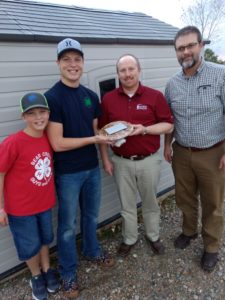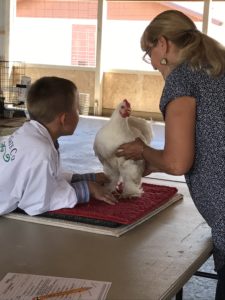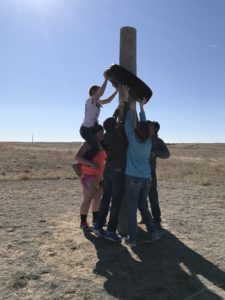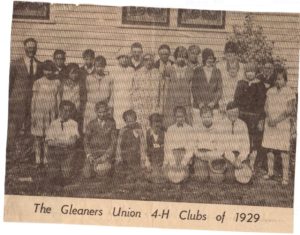This time of year I talk with a lot of parents who are enrolling their kids in 4-H. For some families, this is their first time joining our organization and others are continuing a family tradition that spans generations. Regardless of how long families have been involved in 4-H, the kids are in for a life changing experience.
Through these conversations with parents, I answer a lot of unique and interesting questions. As the resident 4-H professional, these questions remind me that 4-H has a lot of “ins and outs” that can be confusing. Part of my job, and the job of our 4-H Volunteers, is to guide and help families so that 4-H isn’t confusing. For those of us currently engaged in 4-H, navigating 4-H is second nature and logical and we sometimes forget what it was like to not know what to expect.
Another group of kids who didn’t know exactly what to expect were the very first 4-H members who met 117 years ago on January 15, 1902. From that first “ag experiment club” and the many others forming across the country, 4-H was born.
In celebrating the 117 anniversary of 4-H and our first year 4-H families, I searched online and found the most commonly Googled 4-H-related questions. Here are those questions and answers. How many answers do you know?
What do the 4 “H’s” Stand For?
Head, Heart, Hands and Health.
4-H is a positive youth development program so our mission is to help youth acquire the knowledge, develop life skills and form attitudes that will enable them to become self-directing, productive members of society. In order to help youth develop into adulthood, 4-H volunteers and professionals recognize that young people need positive experiences with the four “H’s.”
Head: Represents knowledge and learning. Through hands-on exploration in projects, kids gain knowledge about subject matters that interest them. Participation in specific projects develops specific skills in that project but also teaches youth life-skills such as responsibility, record keeping, decision making that they will use throughout their life.
Heart: Represents caring and loyalty. Through 4-H projects and 4-H Club efforts, kids learn how to care about their community, country and world. Learning loyalty is also an important life skill and kids practice this in 4-H.
Hands: Represents service. A major component of 4-H Club work is providing service to our community, country and world! In addition to service-learning projects, hands represents the hands-on learning that happens in 4-H. 
Health: The final “H” represents the importance of a healthy and balanced life: from proper nutrition, diet, exercise and mental health, these future adults need to know how to take care of themselves.
What is the age limit for 4-H?
Cloverbuds must be at least 5 years old on January 1 of the current year and can be as old as 7 years old as of January 1. Cloverbuds are non-competitive but many hands-on programs and opportunities are available to them throughout the year and during Fair.
4-H Members must be at least 8 years old as of January 1 of the current year. Oldest 4-H members can be 18 years old as of January 1 of the current year.
When kids age out of 4-H, they can choose to participate in collegiate 4-H programs or become 4-H volunteers.
What are 4-H animals?
Livestock projects – beef, sheep, goats and swine – are among some of the projects available to 4-H member. In these projects members learn to properly raise a market animal. For many of our 4-H participants exhibiting their projects at the county fair is a highlight of the 4-H year. This is a chance to show-off what was learned and accomplished throughout the year.
The Junior Livestock Sale Committee, a non-profit group comprised of 4-H and FFA alumni, volunteers and supporters, organize the yearly Junior Livestock Sale which is held during the Goshen County Fair. This is a chance for 4-H and FFA members to sell their project.
Similar to livestock projects, many 4-H members participate in “static” projects. These projects are still and are featured in the 4-H Building. Such projects can be leathercraft, visual arts, range management, foods and nutrition, woodworking and many more. These projects also represent what the members learned and accomplished throughout the year and area displayed for the community to see.
Similar to the Junior Livestock Sale, youth participating in static projects can sell their projects in the Static Exhibit Sale during the Goshen County Fair.
How do you join the 4-H Club?
4-H Clubs serve as the “home base” for our 4-H members. 4-H Clubs are tasked with conducting formal business meetings, providing community service projects and encouraging project work. Organized by local 4-H Volunteers and led by youth officers, 4-H Clubs provide youth a chance to practice leadership, financial management, democracy, group decision making, public speaking and many important life-skills. 
4-H Clubs are often largely responsible for project work. More 4-H Volunteers work with young people to explore and learn more about their projects. These are excellent resource people with expertise in a variety of projects.
Contact the Extension Office to find a 4-H Club for you. Once you contact that 4-H Club Leader, you’ll be directed to an online enrollment to choose your projects and complete the necessary information. That website is: wy.4honline.com
For more fun 4-H history, check out the National 4-H History Preservation site: https://4-hhistorypreservation.com/History_National.asp


